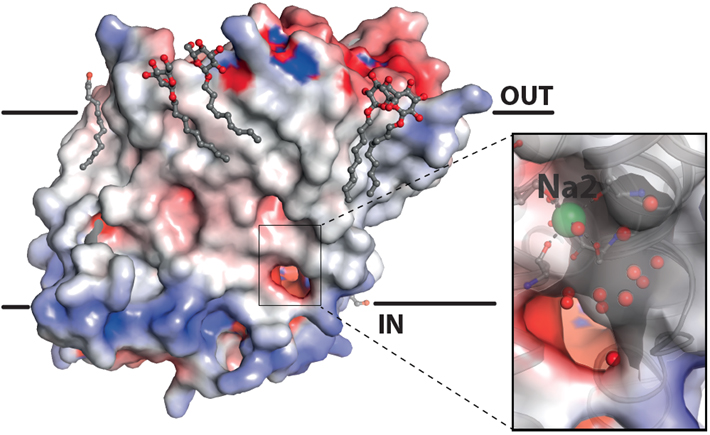New knowledge about neurotransmitter pathways in the brain
Insight into transport mechanisms in brain cells is extremely important in connection with disorders such as schizophrenia, epilepsy and depression, as well as in connection with producing the right medicine. Defects in proteins responsible for the transport of neurotransmitters are actually related to psychological and neurological disorders, and these proteins are also targets for treatment with pharmaceuticals such as antipsychotics and antidepressants, and for psychostimulants such as cocaine and amphetamine.

Communication between nerve cells via chemical messengers
The nerve cells in the brain communicate with each other by sending neurotransmitters to other cells. The nerve cells have synapses that serve as communication centres, where the neurotransmitters are sent and received via synaptic clefts between cells. Such a signal is terminated by means of transport proteins belonging to the family of neurotransmitter:sodium symporters (NSS), which transport neurotransmitters back to the sender cell and thereby terminate the signal, at the same time as preparing the sender cell to make new signals. NSS transport proteins are the target for many drugs used in the treatment of psychological and neurological disorders such as schizophrenia, epilepsy and depression. These drugs typically work by inhibiting the transport proteins so that the neurotransmitters signal for a longer period of time in the synaptic cleft.
Snapshots of neurotransmitter transport
Transport proteins exploit the fact that the intracellular concentration of sodium is much lower than the extracellular concentration, which is also called the sodium gradient, and is constantly upheld by Skou’s famous sodium-potassium pump. When the transport protein binds sodium from the outside of the cell, it can also bind a neurotransmitter molecule. The transporter is thereby closed and can now assume another state in which sodium and the neurotransmitter molecule can slip into the cell. Because the intracellular sodium concentration is very low, the neurotransmitter molecule is mainly transported into the cell and not vice versa. How this process actually takes place, however, has been a mystery until now.
Complete transport cycle close to being determined
All organisms also have other transport proteins of the NSS family that – instead of neurotransmitters – ensure that the cell can absorb valuable amino acids, and they all work the same way. One of these is MhsT from Bacillus halodurans, which researchers at Aarhus University studied using techniques such as X-ray crystallography in collaboration with researchers at Columbia University in New York. The researchers solved the atomic structure of the MhsT transporter, precisely where it binds the amino acid tryptophan and Na+ ions and is ready to release sodium in the cell, specifically by means of a particular transmembrane helix being extended when the transporter closes, thus providing access for sodium to slip into the cell and control the direction of transport with the sodium gradient. This new insight into the transport mechanism was a real breakthrough and it also sheds new light on the regulation of the NSS transporters and the possible mechanism of pharmaceuticals that affect this part of the neurotransmitter pathways in the brain.
This ground-breaking research was possible due to support from the Lundbeck Foundation through project funds granted to Poul Nissen’s laboratory and the Danish Research Institute of Translational Neuroscience (DANDRITE), which is the Danish node of the Nordic EMBL Partnership for Molecular Medicine. Lina Malinauskaite’s PhD studies were supported by the Boehringer Ingelheim Fonds (BIF).
Read the scientific article in Nature Structural & Molecular Biology entitled: A mechanism for intracellular release of Na+ by neurotransmitter/sodium symporters.
For more information, please contact
Professor Poul Nissen
DANDRITE – Nordic EMBL Partnership for Molecular Medicine
Department of Molecular Biology and Genetics
Aarhus University, Denmark
+45 2899 2295 - pn@mbg.au.dk
